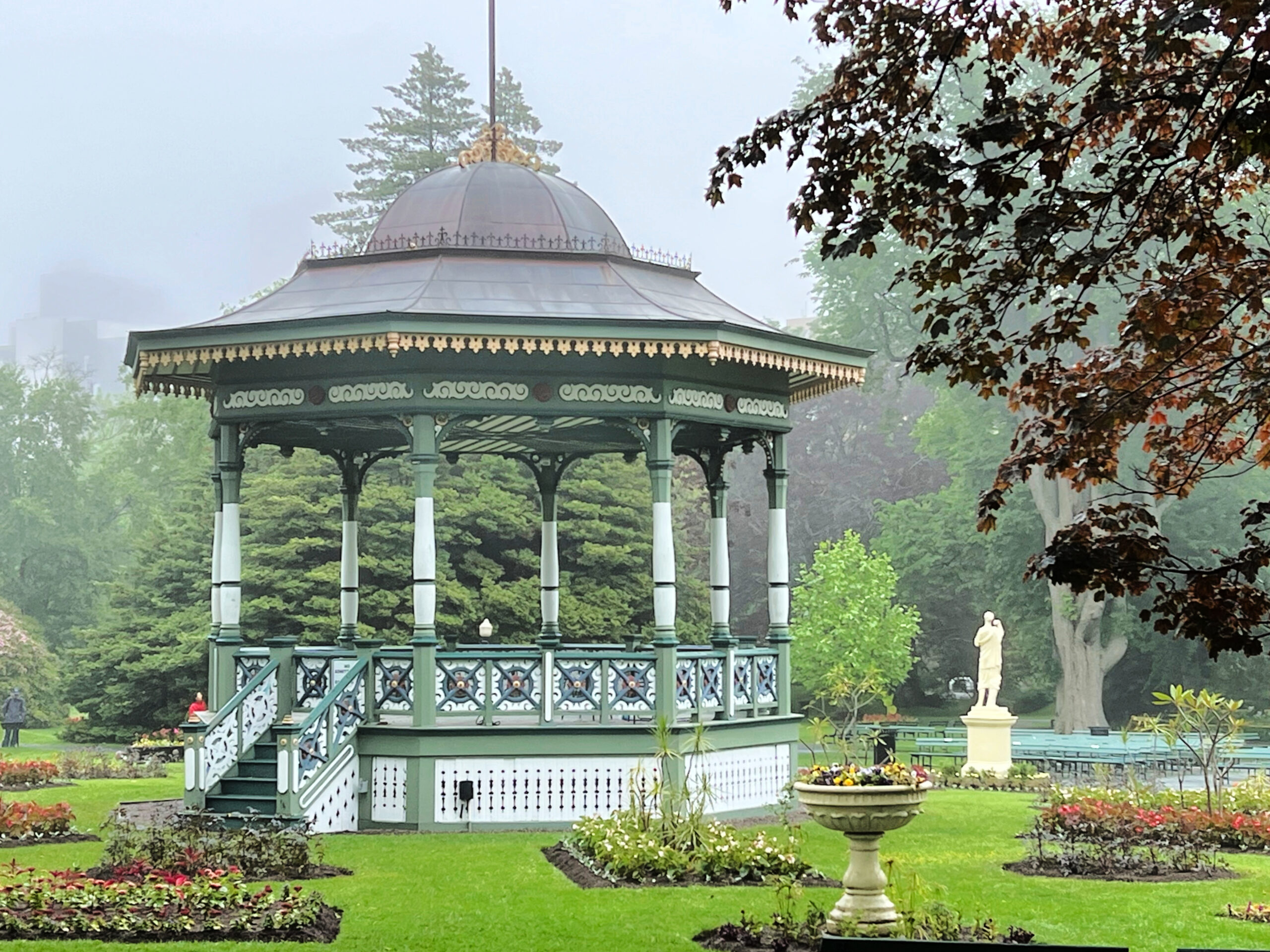
Halifax
We traveled with Tauck on their Canadian Maritimes tour which began in Halifax, Nova Scotia. The British military founded Halifax in 1749. The Welcome Dinner for our tour was held at the Citadel in Halifax. The Citadel, situated at the top of a hill – later known as Citadel Hill – was in a perfect position to defend the harbor. One of the first buildings constructed was a wooden guardhouse at the top of the hill. Settlers built their homes at the base of the hill.
The Citadel we saw was built in 1856 and was the fourth one to be built in this location. Its star-shape is typical of many 19th century forts built by the British military. Soldiers could defend the fort from any angle.
While we visited, a member of the 78th Highlanders played the bagpipes for us and a member of the Royal Artillery demonstrated the use of muskets.
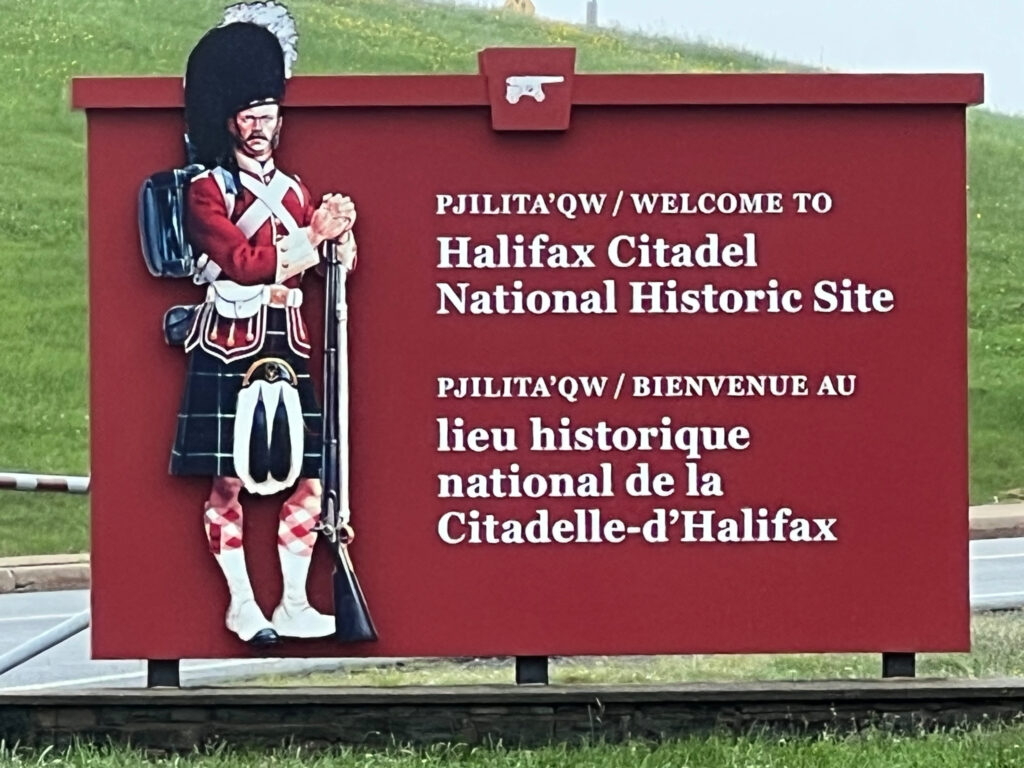
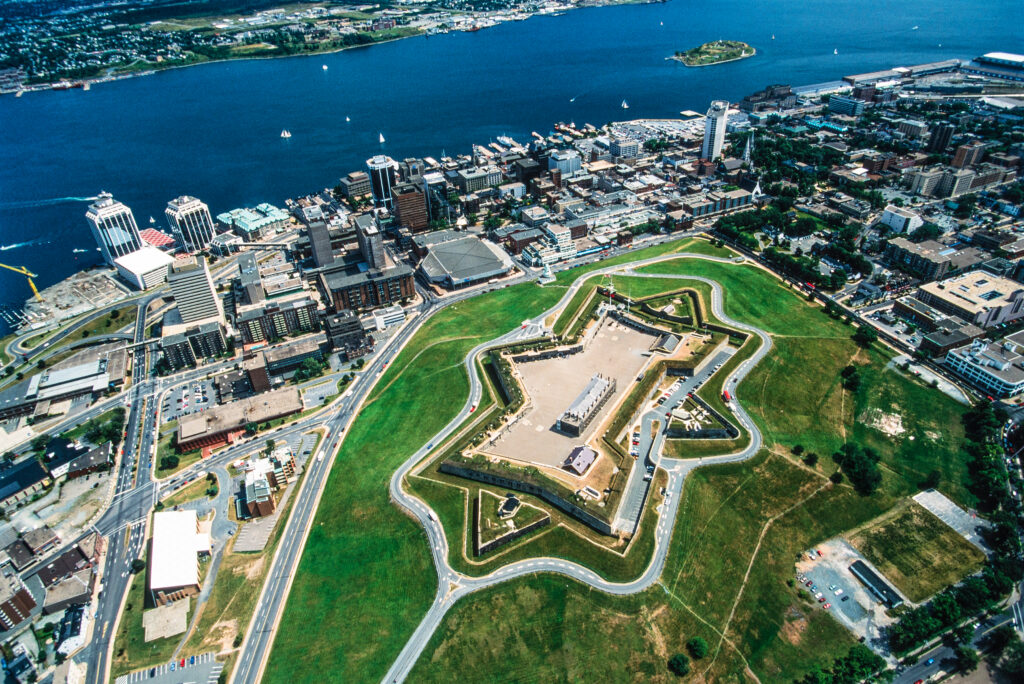
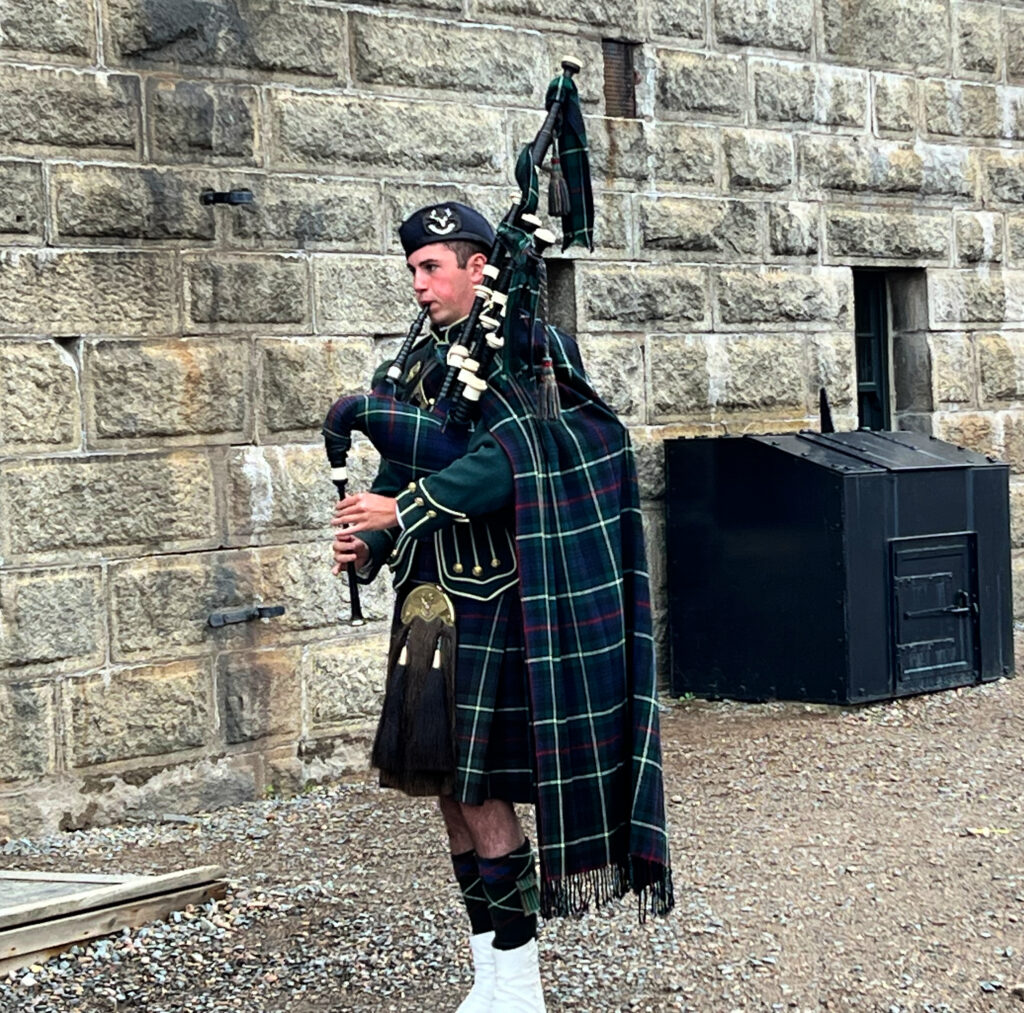
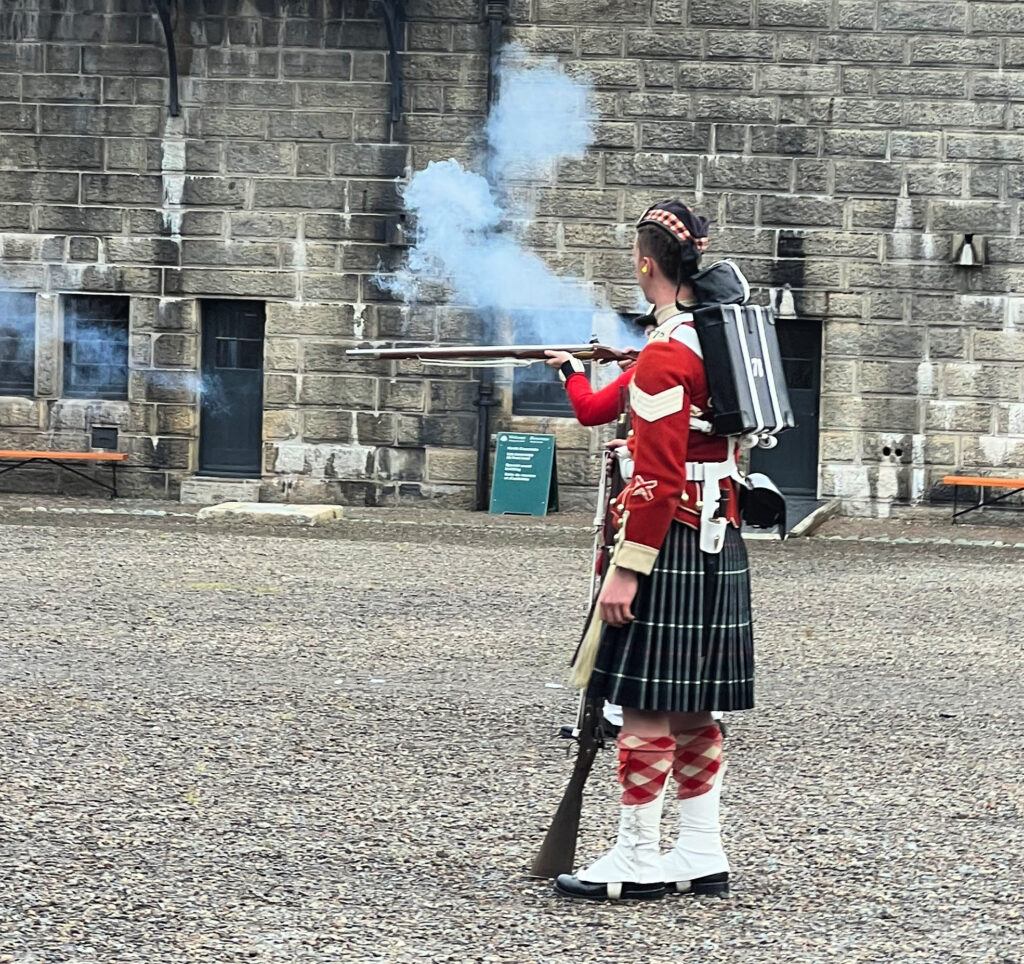
This is the Halifax Town Clock, also called the Old Town Clock, located on Citadel Hill. Prince Edward, Duke of Kent, who at the time was the commander-in-chief of the British military forces in North America, is credited with the idea of the clock for the British Army and Royal Navy Garrison at Halifax. He hoped it would resolve a tardiness problem in the Garrison. The clock was manufactured in 1800. The clock mechanism, the same one in use today, is driven by three weights, gears, and a 13-foot pendulum. Its bell strikes hourly and quarterly. The Town Clock began keeping time for the Garrison on October 20, 1803.
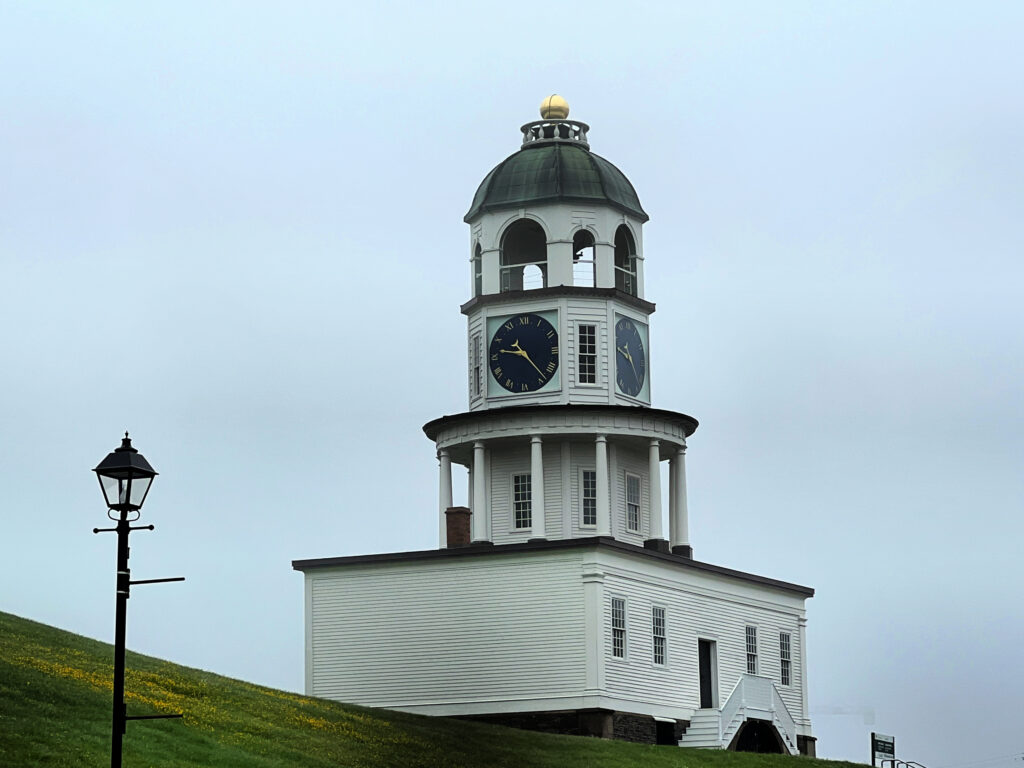
The next day we visited the Fairview Lawn Cemetery in Halifax where some of the victims of the Titanic are buried. The Titanic sunk near Halifax and 121 victims were brought here for burial. The first picture below is the grave of a child who was recently identified as Sidney Green thanks to DNA studies. The little boy was from Britain and his family also perished, but their bodies were never recovered. Flowers and toys are often left at the grave. We were also given a flower to place at his grave.
Each body was assigned a number. Officials were meticulous in recording any information that could help identify victims – documents they were carrying, pictures, and who might have been traveling together. Families were buried together when possible. Identification efforts have continued via DNA analysis linked to descendants.
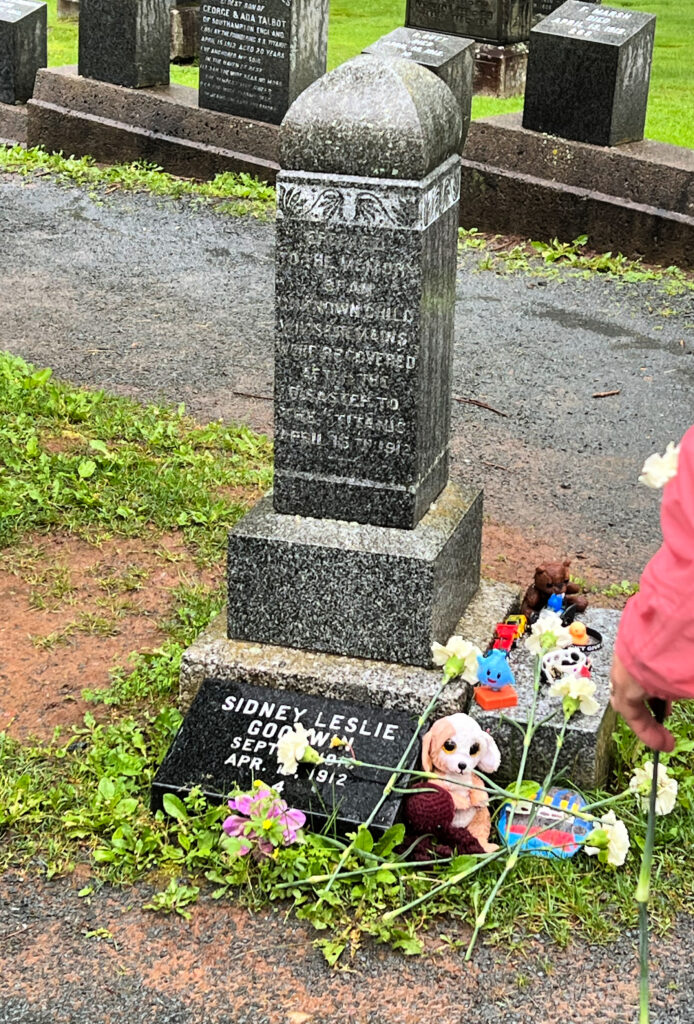
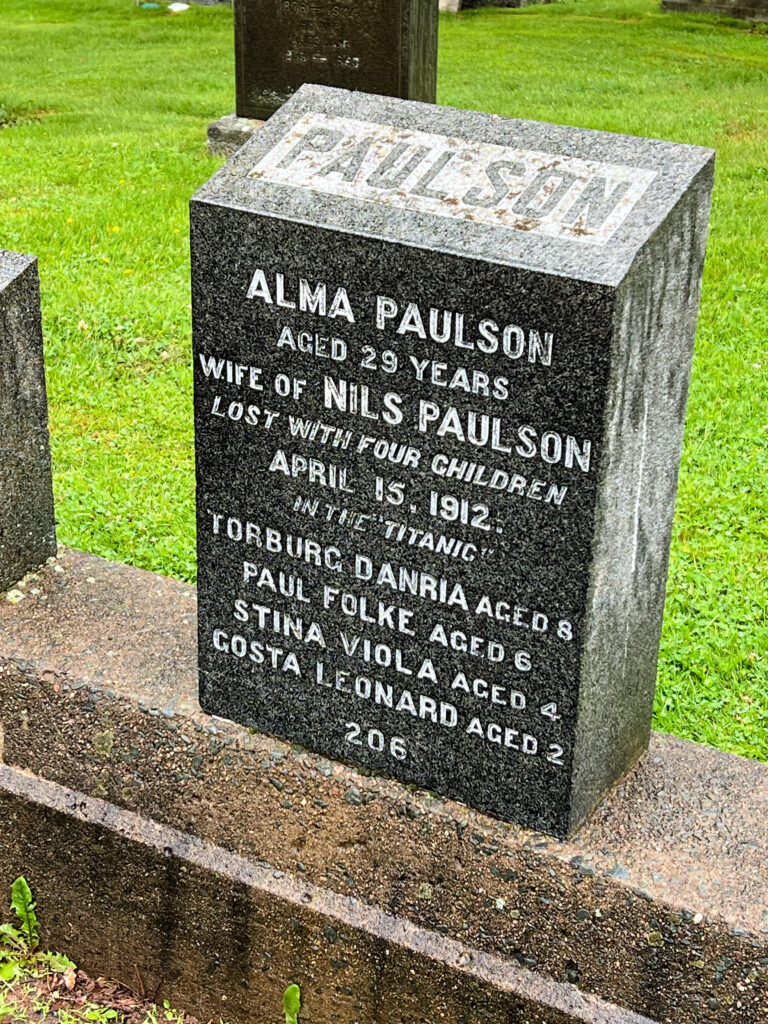
We also visited the Halifax Public Gardens, which dates back to 1836. The wrought iron gates were made in Glasgow, Scotland. They incorporate the Halifax civic crest from an earlier gate. The picture with the bridge has no special significance – it was just a beautiful scene. Also pictured is the bandstand which was restored in 2011. Bandstands are common throughout the world and this one was incredible.
The fountain, one of four in the Gardens, commemorates Queen Victoria’s 1897 Diamond Jubilee. Also significant is the oak tree planted by King George VI in 1939. Queen Elizabeth accompanied him on the trip. It has grown into a strong tree.
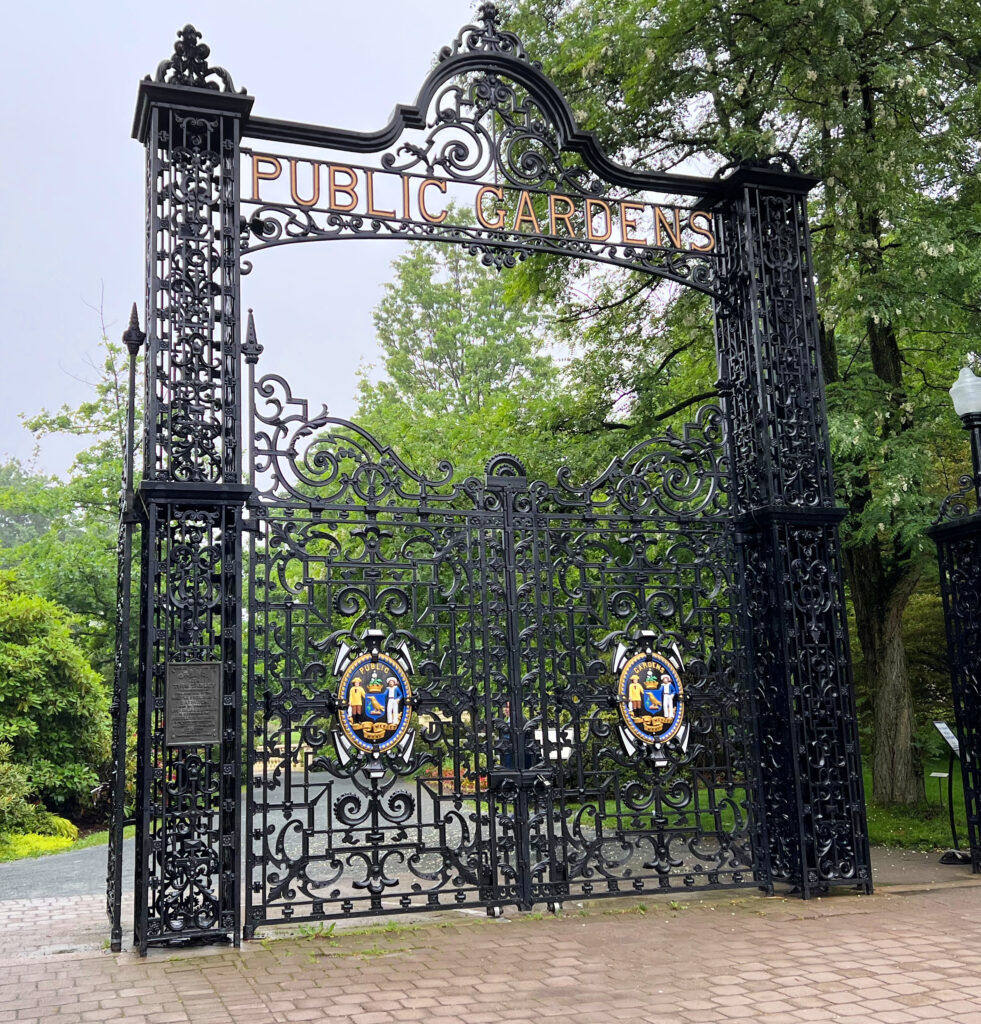
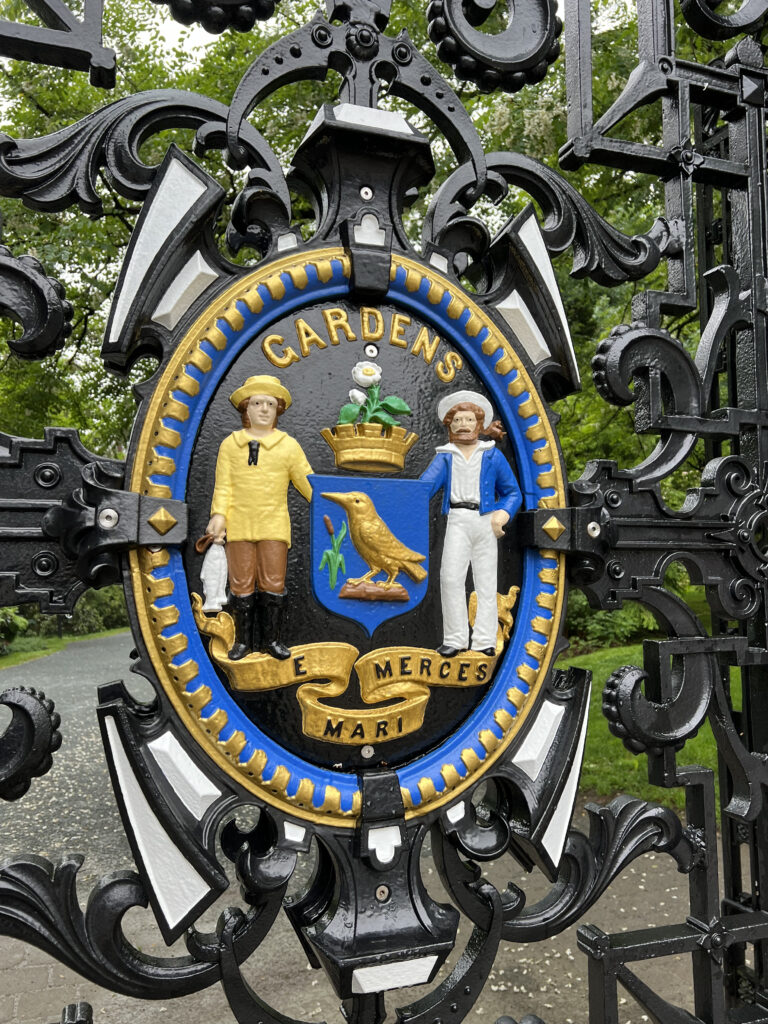
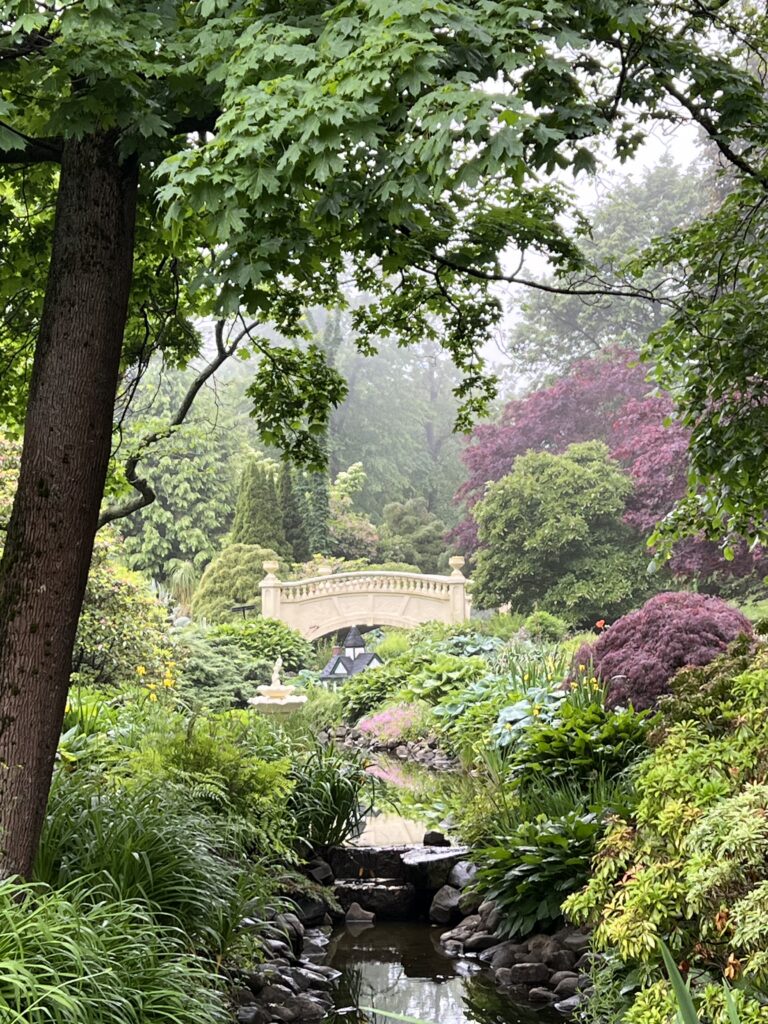
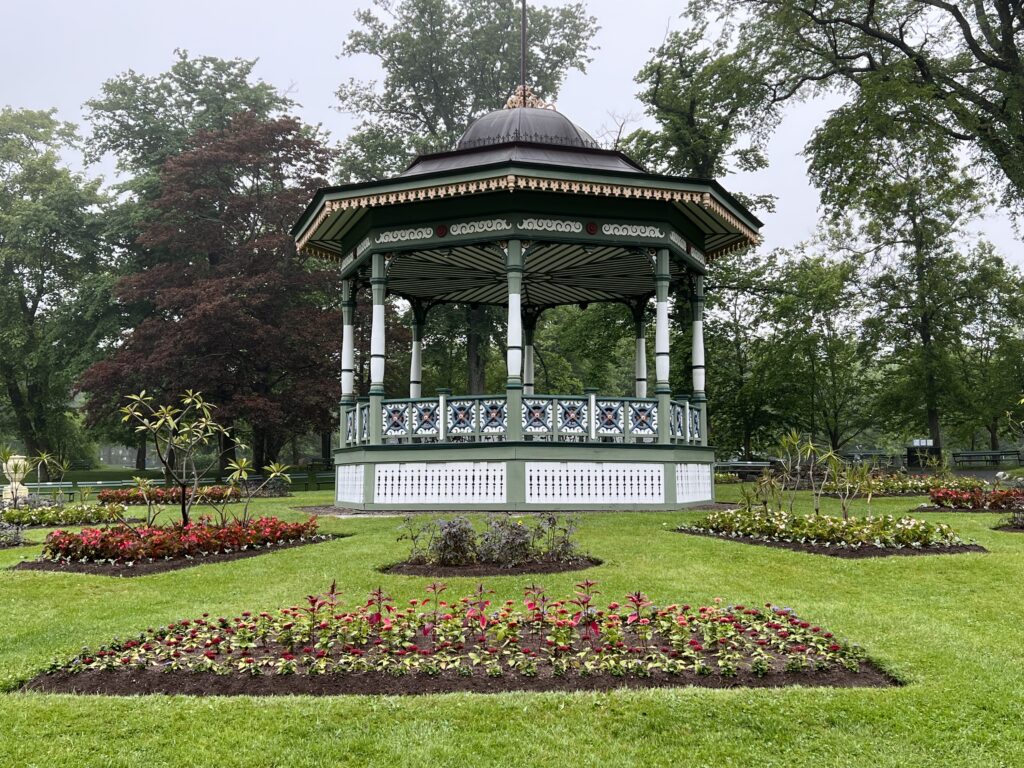
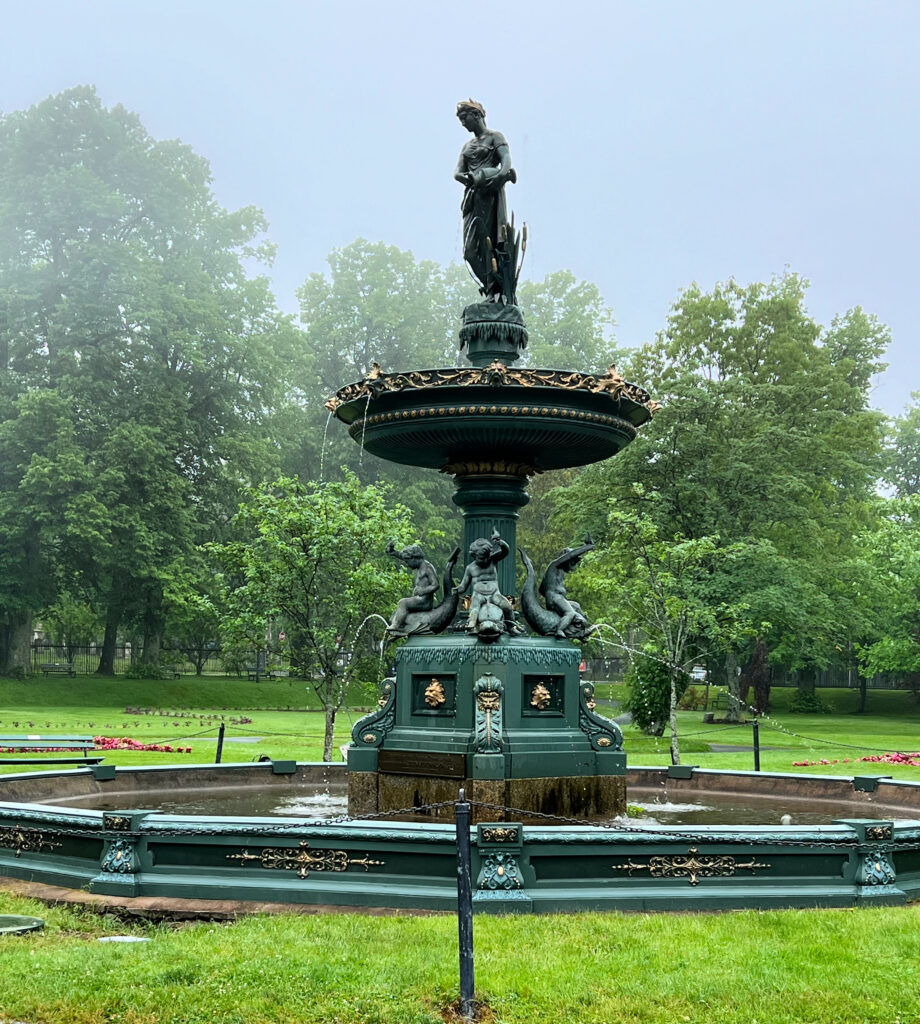
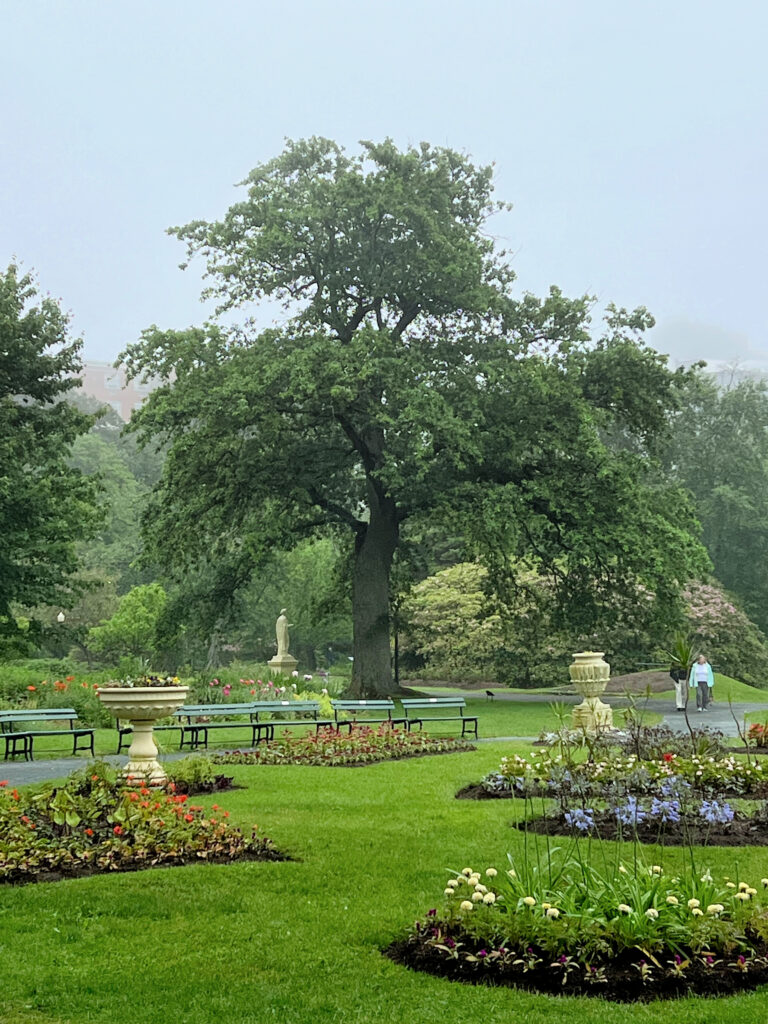
We also visited Pier 21 situated along the Halifax Harbor. Like Ellis Island in the United States, it is where many immigrants entered Canada in search of new lives. It served as an immigration facility for 43 years, from 1928 to 1971. I took the picture of the building while we were sailing in the Halifax Harbor.
Our guide walked us through the exhibits as if we were going through the intake process. We first saw a model of a ship cabin that was typical on ships bringing people to Canada. We also saw several suitcases that were labeled for the journey.
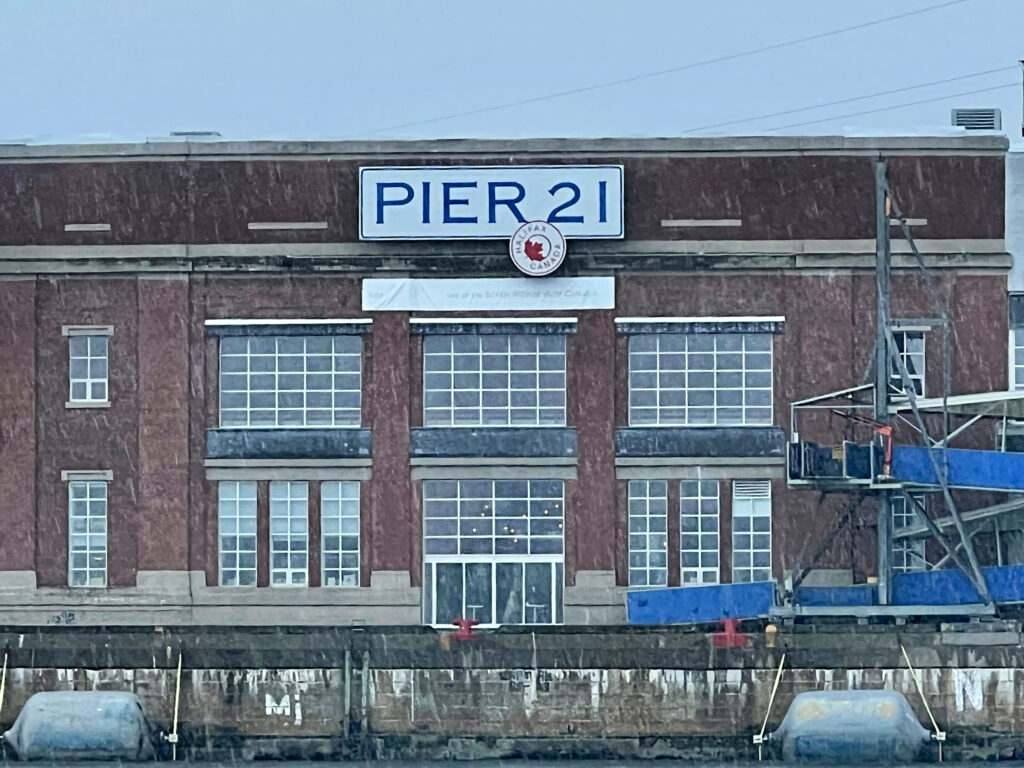
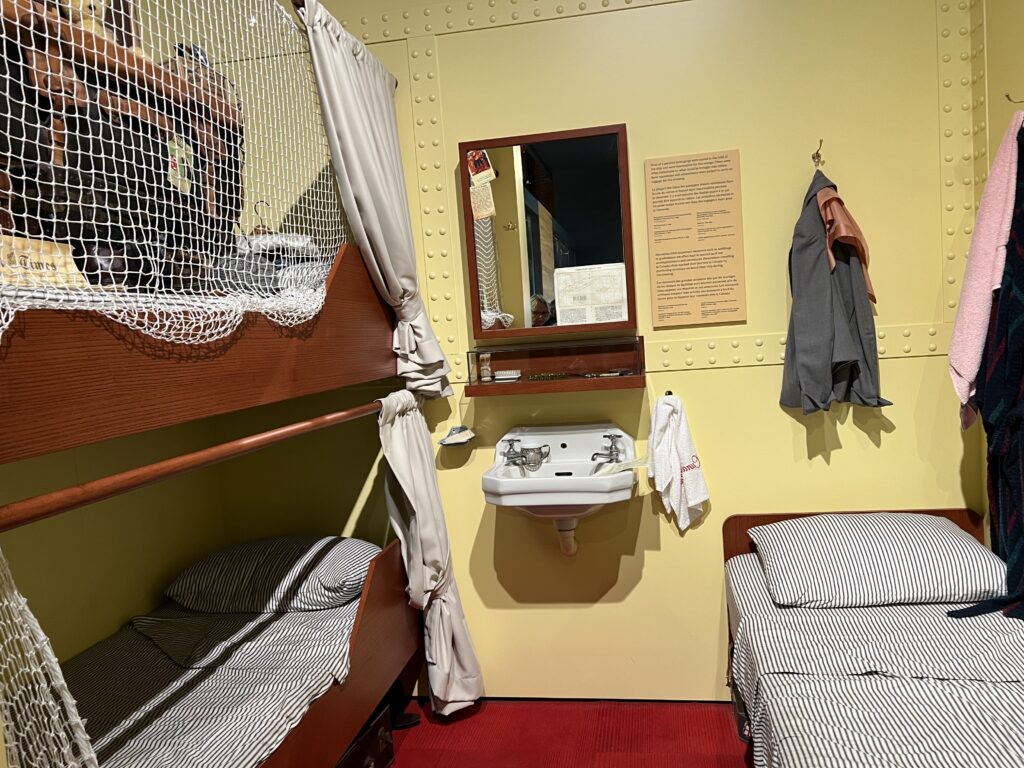
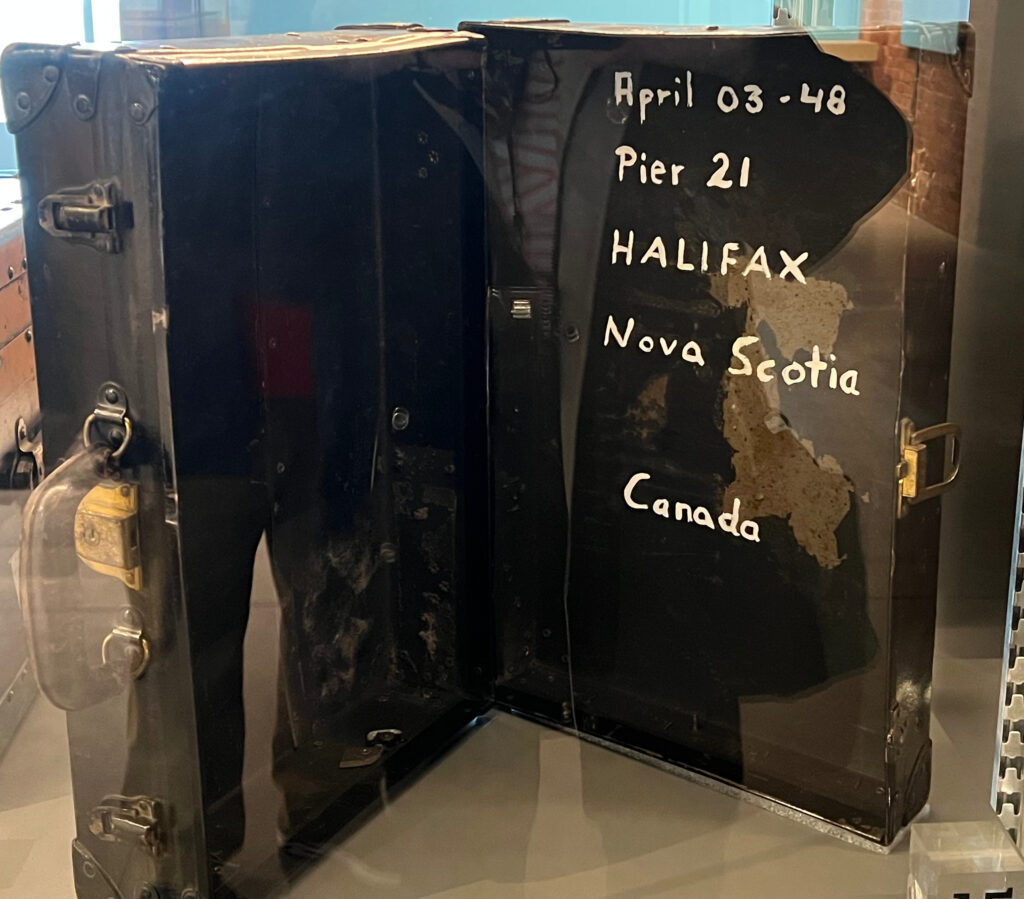
After reaching Canada, the people disembarked from their ship. They then had to meet with an immigration officer. Note that none of the people in the third picture are wearing glasses. That was considered a disability and would have disqualified them from entering Canada. They had to give up any food they were carrying. They could buy goods at a small store set up at the facility, but much of the food would be items unfamiliar to them. If everything went well, they were admitted into the country. Some took trains to other parts of Canada. We actually boarded a train car that had the windows painted with the scenes the new Canadian residents might have seen on their trip.
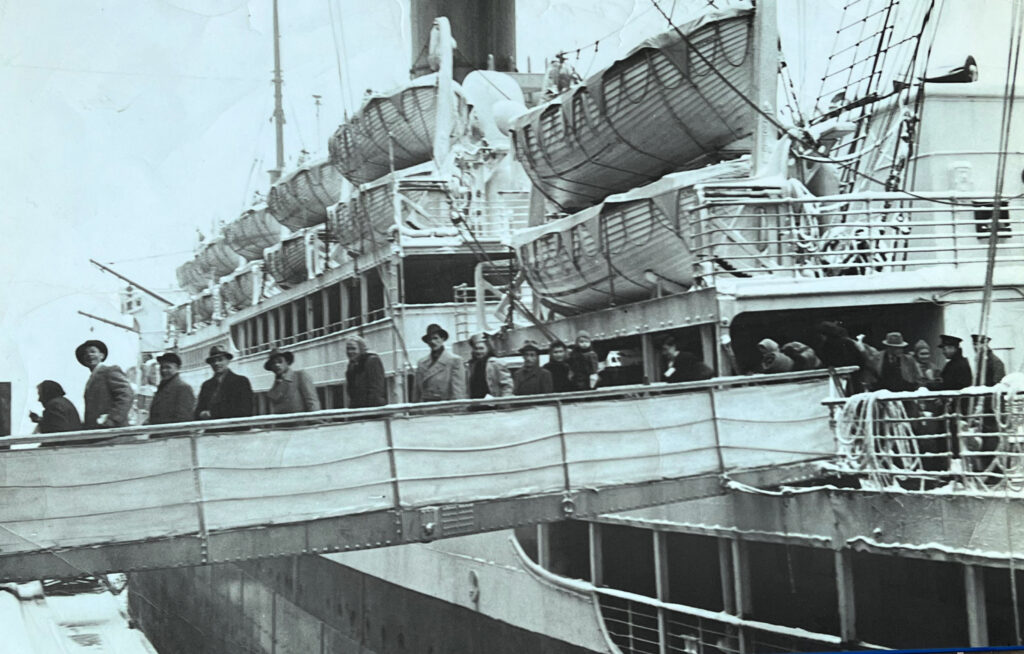

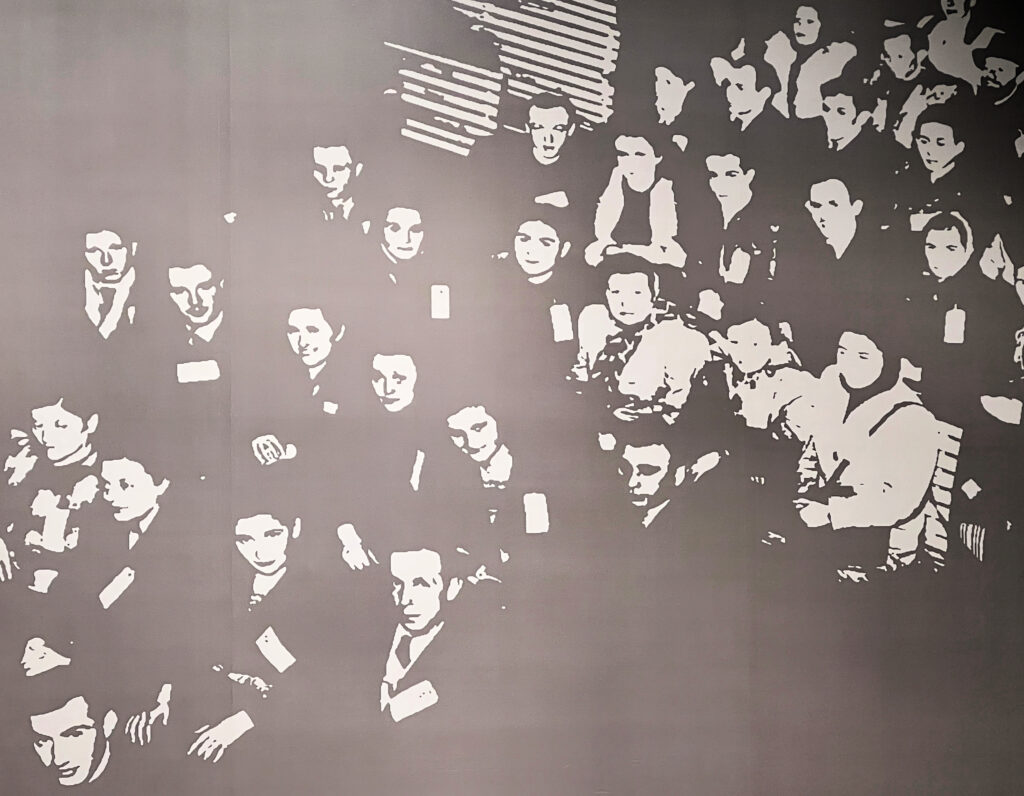
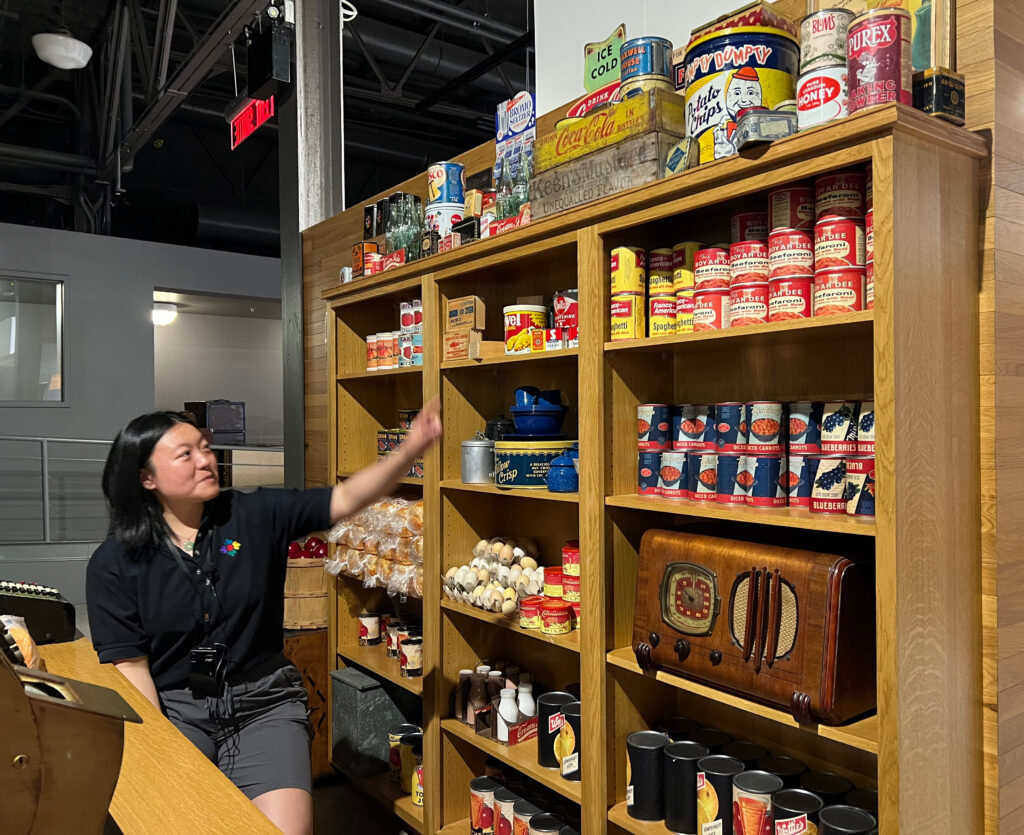
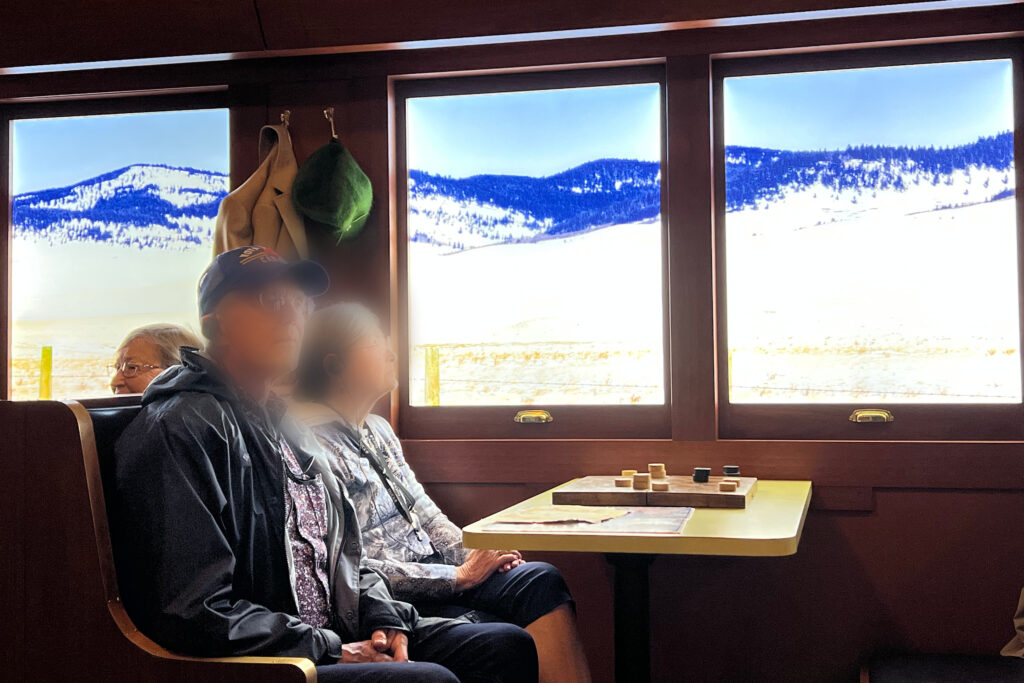
We enjoyed our time in Halifax despite rain almost everyday. We long ago decided that we would not let weather impact our sightseeing as long as it didn’t compromise our safety. And in Halifax, we heard over and over again how thankful the people were for the rain. In May (2023), the Halifax area suffered devastating wildfires that destroyed many homes and buildings. There were evacuation orders impacting thousands of people. We visited in late June/early July. People we talked with spoke of what a blessing the rain had been. The following quote from an NPR article summarizes it well:
HALIFAX, Nova Scotia — Officials in Canada’s Atlantic Coast province of Nova Scotia said Saturday a wildfire that forced thousands of residents from their homes over the past week is now largely contained because of rain…If you step outside you will see something beautiful: rain, and hopefully lots of it.
https://www.npr.org/2023/06/03/1180016272/canada-nova-scotia-wildfires
We considered ourselves fortunate that the fires had been controlled and that our tour could go forward. And as we met people – some who had been affected by the evacuations – they shared their thankfulness and relief that the danger was over and their lives were returning to normal. So in the big picture, rainy days were a good thing!